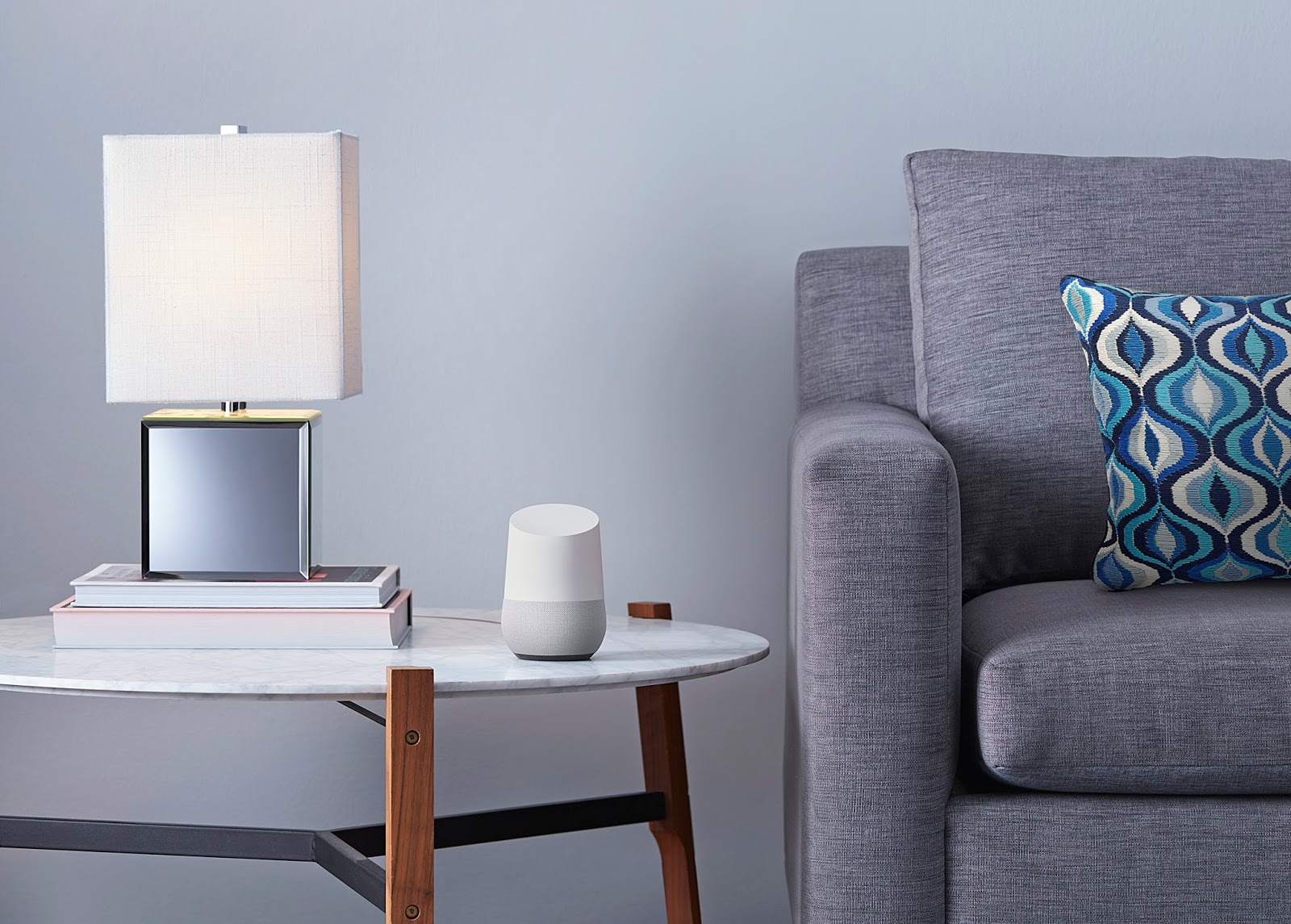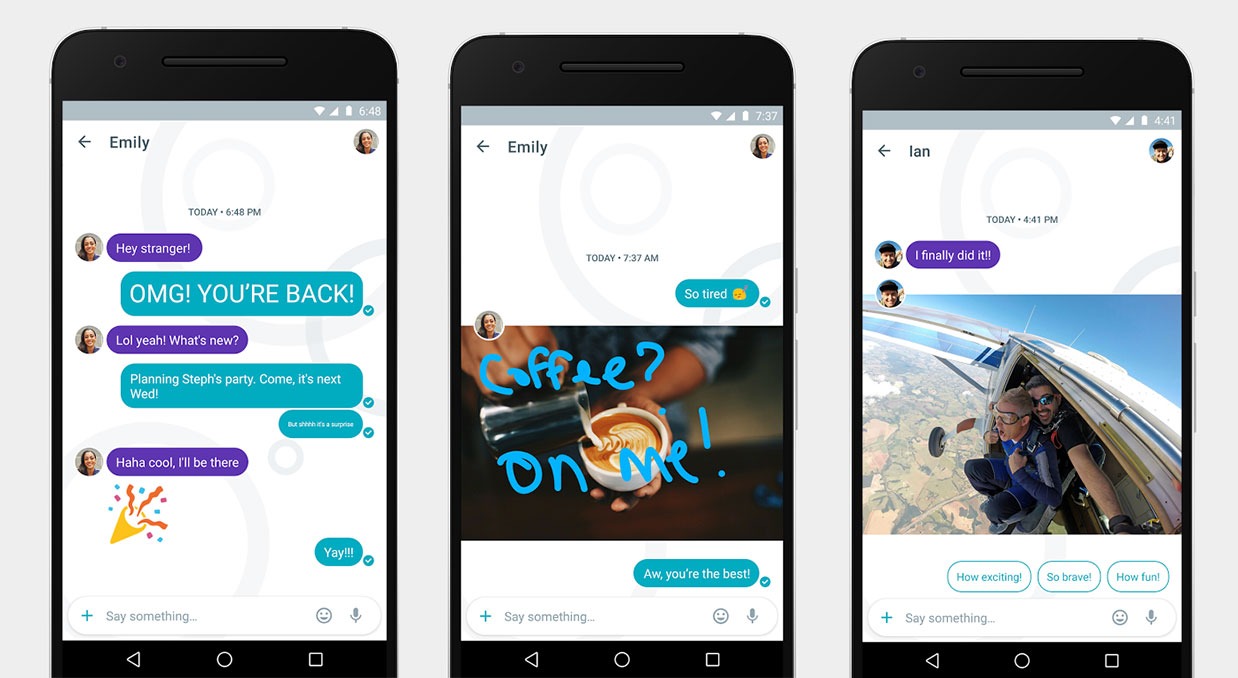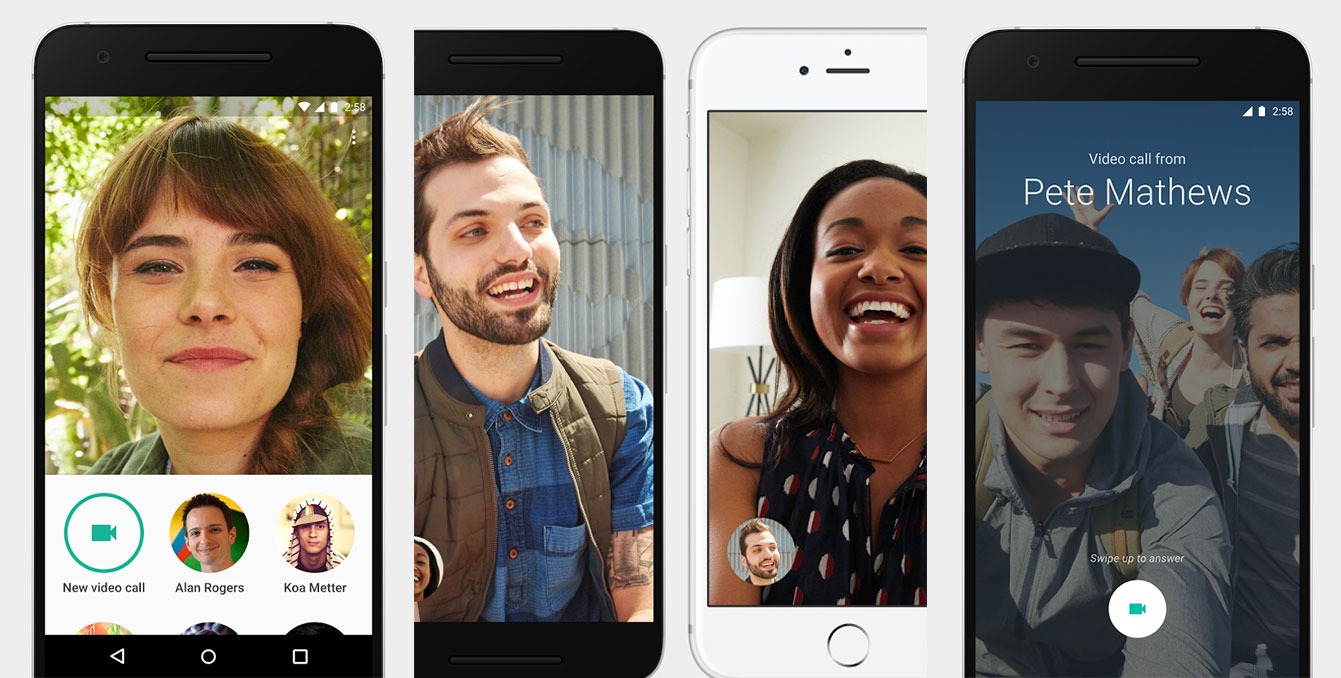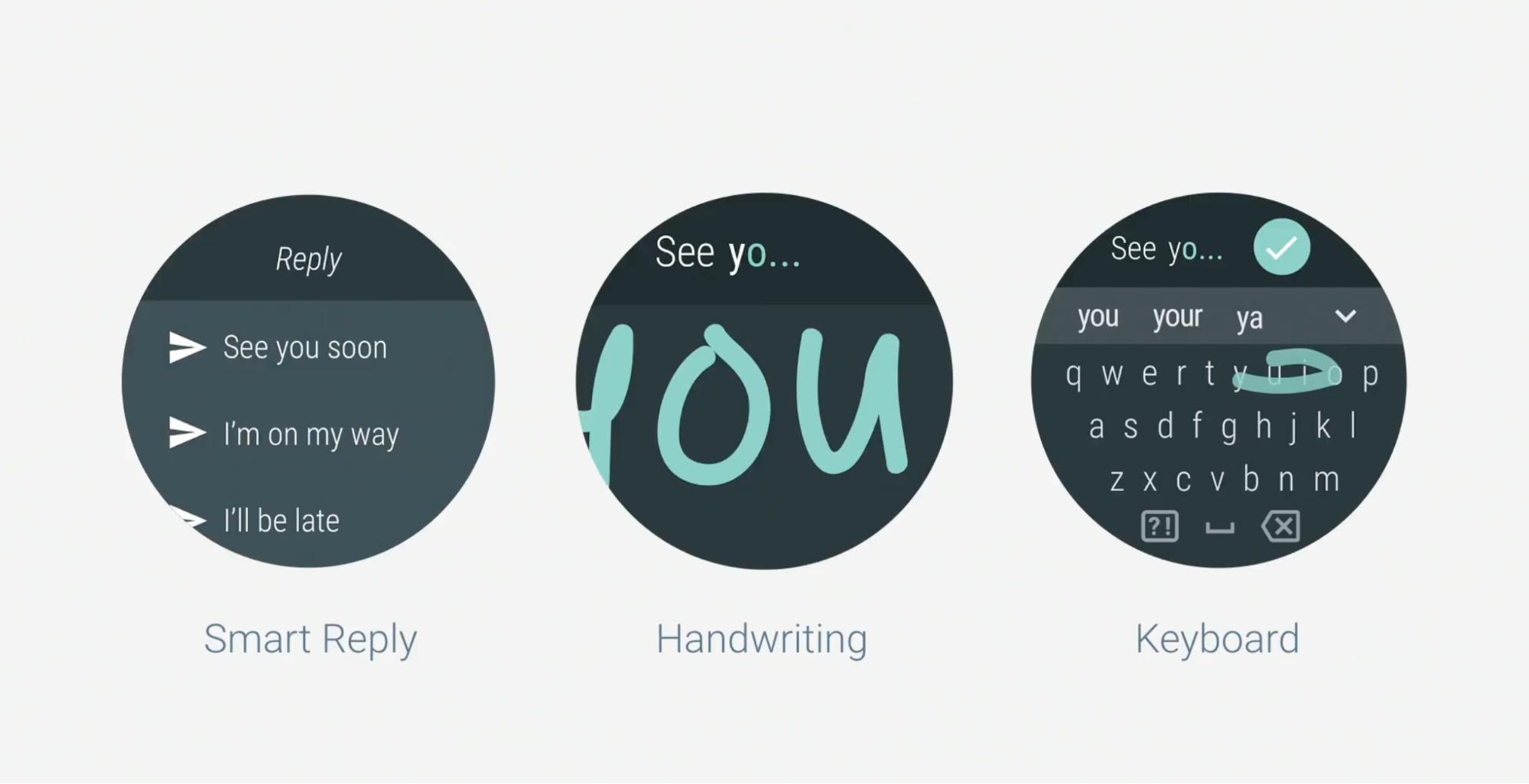Google I/O 2016 Includes Announcements with Apple Appeal
Last week, Google held its Google I/O conference – roughly the equivalent of Apple’s Worldwide Developers Conference, which kicks off next month (see “WWDC 2016 Dates Announced,” 19 April 2016).
Much of what Google announced during it two-hour keynote – like updates to its Android operating system – has little relevance to Apple users, but a few of the announcements intersect with the Apple world.
Google announced a service called Google Assistant, which is a renaming and updating of Google Now, Google’s answer to the Apple Siri and Amazon Alexa virtual personal assistants.
Google also took the wraps off Google Home, a physical appliance that includes the voice-control aspects of Google Assistant — it’s the company’s inevitable answer to Amazon’s popular Echo device with its Alexa voice-based assistant.
Google Assistant also will be integrated into Allo, a new messaging app for iOS and Android that’s comparable to Apple’s Messages but adds innovative communication, security, and search capabilities. Alongside Allo, Google announced another iOS and Android app, dubbed Duo, for video messaging. Google promises to ship both this summer.
Finally, Google revealed feature enhancements to its Android Wear smartwatch operating system, which has offered limited compatibility with the iPhone for some time.
“OK, Google” — Amazon, Apple, Google, and Microsoft have been in a smart-assistant arms race to develop entities that can do a user’s bidding via casual, conversational prompts. Results have been variable, as any Apple user who has struggled with Siri can attest.
Google Now hasn’t proven radically better or worse than Siri, but Google is uniquely positioned to improve in this tech category because of its long history of work in natural language processing and the massive storehouse of data it can bring to bear when answering questions.
Google’s latest attempt, Google Assistant, is, in part, a chatbot. These conversational cyber-beings have been all the rage lately, with both Facebook and Microsoft promoting artificial entities with seemingly sentient capabilities, and numerous bots taking up residence in the group messaging tool Slack.
Real-world impressions of these chatbots have been mixed, and it’s unclear whether the Google Assistant version will be better than what we’ve seen so far.
Google said its customers can harness Google Assistant to have a “conversational and ongoing two-way dialogue with Google to get things done in your real world, understanding your context, and giving you control of it. We think of it as building each user their own, individual Google.”
Google expects this will happen primarily via the voice interactions that currently account for roughly 20 percent of Google search queries (typically via mobile devices, including iPhones).
In its demo, Google demonstrated how a smartphone user could ask what movies are playing that night, and clarify that the kids are coming along. Google Assistant would then refine the search results with a family-friendly spin and offer to buy tickets (via integration with an as-yet-unspecified online vendor such as Fandango). The user could also ask if a film “is any good,” which would prompt Google Assistant to cough up reviews and trailers.
Similarly, a user could say “let’s have curry tonight,” a statement that would prompt Google Assistant to suggest local eateries and offer to place an order for pickup or delivery.
Alexa, Meet Google Home — Amazon’s Echo, a cylindrical Bluetooth speaker that integrates the company’s Alexa voice assistant, came out of nowhere in late 2014 to enchant the technorati.
The Echo has broad appeal in part because it’s mostly platform-agnostic – iPhone and Android users can avail themselves of it equally to request news stories, turn on lights, update shopping lists, and create alarms and to-do items.
Amazon has since expanded its Echo line to include the smaller, cheaper Amazon Tap and the Echo Dot, the latter of which can be ordered only via Alexa, strangely enough. Alexa also appears in the second-generation Fire TV.
Given the Echo’s popularity, Amazon competitors have been widely expected to offer comparable devices, and Google is now doing exactly that with Google Home, slated for release later this year.
Google Home is intended to look more inviting than the dark, impersonal Echo. The device, shaped somewhat like a vase, is white on top, with a base that can be customized in a range of colors and finishes (like fabric and metal) to match any home’s decor. The sloped face incorporates colored dots that dance when the device is interacting with the user; Google said a great deal of thought went into those little orbs’ “choreography.”
As with the Echo, any family member in a home can throw voice queries at Google Home and receive natural-sounding replies.
A demo video showed members of a family making heavy use of the gizmo for calendar changes, travel-itinerary and package-delivery checks, control of home audio and lighting, and so on. It even helps with schoolwork questions, offering up the atrociously accented “manzana” when asked how to say “apple” in Spanish.
Amazon’s Echo is intended to play music, but users have griped about its somewhat puny speaker. Google claims that the Google Home’s speaker has “rich bass and clear highs,” an important feature when smartphone users throw or “cast” music to the device – an iPhone makes a fleeting appearance at this point in the demo.
The Echo is largely a standalone gadget, and Google intends Google Home to be a superior option by allowing multiple such gizmos around the home to operate in unison, not unlike Sonos-branded audio gear that joins into a mesh network. Google Home also can be used to control speakers and TVs in the home, provided they have Google Chromecast or Chromecast Audio wireless dongles attached.
Google said it’s “early days” for Google Home, an indication that more is yet to be revealed about the appliance, but the company is already looking farther ahead to the time when it can book a ride via Uber, order dinner, send flowers to your mother, and more, all via voice commands.
“Allo? It’s Me.” — Before Google Assistant shows up on Google Home late in the year, it will make its debut this summer as a part of the new Allo messaging app for iOS and Android.
Google has been trying to lick messaging for some time, with a number of apps, like Voice, Hangouts, and Android Messenger aimed at different audiences. With these apps, Google is competing with Apple’s Messages, Facebook’s WhatsApp and Messenger apps, and innumerable others.
Allo – though not entirely original – is a radical rethinking of how Google approaches messaging. No Google account is needed, for instance; the user merely provides a phone number.
Google said it has commissioned an enticing new library of icons and stickers, which can be made bigger or smaller via a slider in a feature it’s calling “Whisper Shout.” Text also increases or decreases in size, and users can scribble on pictures, too.
Taking a page from its Inbox email app, Google also is offering a smart reply capability with canned responses customized to whatever is on the screen. An invitation to dinner might generate an “I’m in” automated reply, for instance.
In a neat twist, these responses can even apply to pictures. Google has become increasingly skilled at image recognition, which it uses heavily in its Google Photos service, and is now integrating such capabilities into messaging. A dog photo might create a “cool poodle!” reply. A picture showing a serving of pasta might generate a “that’s a nice plate of lasagna” response.
Google said Allo is designed to learn a user’s habits, patterns, and tastes over time, thereby increasing the relevance and usefulness of its automated features. This learning extends to Google Assistant, which will take vocal queries just as it does on the Google Home device, as well as typed-out versions.
Google describes Allo-based interactions with Google Assistant as “an ongoing dialogue between you and Google to get things done in your world.”
When a group of friends is chatting about dining options, for instance, they could use Google Assistant, right in the message thread, to evaluate eateries and (via an announced integration with OpenTable) even book a table for the group.
Or someone using Allo could pose questions like, “did my team win?” – the assistant would know what team that is, based on the user’s past patterns, and available context.
Google Assistant could even be treated as a friend of sorts, queried directly via its @google handle for cute cat pictures or invitations to play simple games. Google showed off one such basic game: the assistant displays the name of a movie as a series of emojis, and the human needs to guess what film it is. Siri has proven popular with at least one autistic boy; perhaps Google Assistant will play well with the younger set too.
During its Allo demo, Google also emphasized security. The app’s messages are encrypted by default. An “incognito” mode (similar to the one in Google’s Chrome browser) beefs up security even further with full end-to-end encryption. It also has a “discrete” interface and alerts that make it more of a challenge for, in Google’s words, “shoulder surfers and prying eyes.”
Tearing a page from the popular Snapchat app’s playbook, Allo also boasts an expiration feature that can optionally give message threads finite lives and make them impossible to retrieve once deleted.
Knock, Knock — Just as it’s trying to reinvent messaging with Allo, Google is attempting to revamp video messaging via the Duo messaging app for iOS and Android.
Duo isn’t as packed with new features as Allo, at least based on what was shown during the Google I/O demo, and a lot of its innovation occurs under the hood.
It relies on a newer multimedia technology called WebRTC, developed at Google, that is powering an increasing amount of video and audio on the Internet. Google said Duo is designed to operate reliably under a variety of conditions, and to degrade gracefully with slower connections and other adverse conditions.
In terms of what is visible to the user, Duo has introduced a feature called “Knock, Knock” that displays a video preview window of the caller. For the person on the receiving end, Knock, Knock can serve as a useful call-screening feature – a visual caller ID of a sort. It also allows the caller to engage in all manner of visual hijinks to entice the callee into picking up.
A Google engineer demoed this feature rather adorably with a live call to his two young daughters.
Like Allo, Duo is associated with a user’s phone number and does not require a Google account.
Android Wear 2.0 — Google’s smartwatch operating system became relevant to iPhone owners when Google released an iOS app to pair Apple phones with various Google-powered watches (see “Android Wear Watches Now Work with the iPhone,” 26 October 2015).
Google Wear is not likely to dethrone Apple’s watchOS anytime soon. But, as a Google staffer put it during a Google I/O demo, “No matter what phone you carry in your pocket, you should always be able to wear what you want on your wrist.” Android Wear has particular appeal to iPhone users who rely heavily on Google apps and services.
Version 2.0 of Android Wear, due this fall, will introduce a number of features. Any watch face will be able to display data from any app; though Apple’s watchOS supports third-party complications, they are not supported on every face.
Android Wear 2.0 will feature handwriting recognition, allowing users to scrawl out brief messages, if awkwardly. Automated replies, not unlike those available in Allo (or the Apple Watch), will be included. It will even have a keyboard with letter-to-letter swiping now common on phone keyboards, but that’s sure to be a challenge on a tiny watch screen.
In the fitness arena, Google is making it easier for various health apps to exchange information, and for watches to log fitness info more transparently. Android 2.0 watches will be less dependent on handsets, too, with standalone apps and direct online access – for listening to Spotify, say, via cellular, Wi-Fi or Bluetooth.
The Upshot of I/O — Google tends to be hit-and-miss where Apple users are concerned.
Often, splashy new apps and features appear first for Android and only later filter over to the iPhone and the iPad. The company’s Gboard iOS keyboard is a welcome exception to that trend (see “With Gboard, Google Unveils a Great iPhone Keyboard,” 13 May 2016).
At the same time, Google is sometimes criminally slow in updating its existing iOS apps. Why Google Docs for the iPad still doesn’t have split-screen support is a mystery for the ages.
But Google shows no sign of abandoning or ignoring iOS the way it neglected Microsoft’s Windows Phone OS, which was surely a factor in the downfall of that now-moribund platform.
If Google’s latest I/O announcements are any indication, the company still views iOS as a top priority. This stance is partly self-serving; Google wants massive adoption for Google Home and its messaging apps, for instance. Whether or not it will meet that goal, it still looks safe for Apple users who rely on numerous Google services to stick with iOS devices over Android variants.



